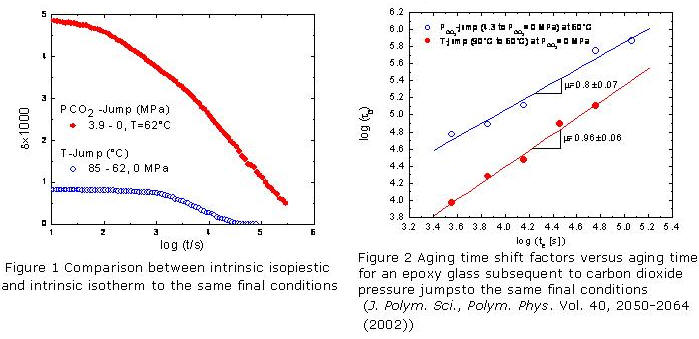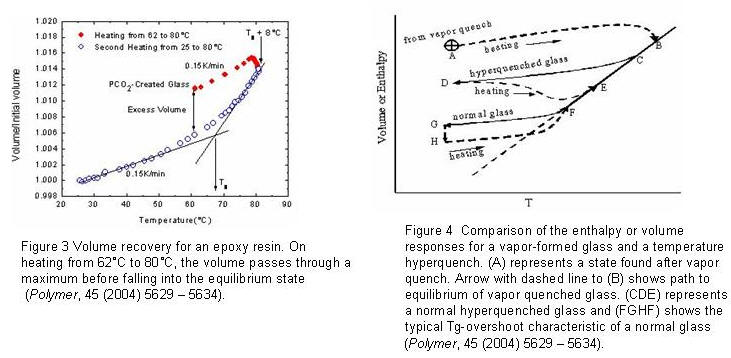Plasticizer Effects on Polymer Glasses
Lameck Banda
Shankar Kollengodu-Subramanian
Structural Recovery and Physical Aging in Polymer Glasses Subsequent to Plasticizer Jumps
Lameck Banda, Shankar Kollengodu-Subramanian
We are studying the structural recovery and physical aging responses of polymeric glass forming materials subsequent to plasticizer jumps (relative humidity (RH) and carbon dioxide pressure (PCO2)) in order to provide fundamental knowledge of the long time performance of polymer glasses. In prior work (reference to Yong, Mataz, Lameck), we have shown that the behavior of polymer glasses formed by a plasticizer jump is significantly different from the behavior when the glass is formed from a temperature jump. This result manifests itself in two dramatic ways. First, even though the concentration glass has a higher volume than a temperature-glass, the structural recovery and physical aging responses are slower. This is depicted in Figures 1 and 2. In addition we find that the concentration glass is more stable than the temperature glass to heating. As shown in Figure 3, a glass formed by a carbon dioxide pressure jump has a high initial volume compared to temperature glass. However upon heating, the concentration glass only “collapses” to the state of the temperature glass well above the glass transition. Additionally, these results show that the concentration glass is not equivalent to a hyperquenched temperature glass as shown in Figure 4.

We are now completing the thermodynamic surface by performing calorimetric experiments. In these experiments we are studying the enthalpy recovery using a modified Setaram C80 Calvet calorimeter to which a pressure capability has been added. These will be the first enthalpy recovery experiments performed after plasticizer jump experiments on polymer glasses.

Funding
- National Science Foundation
